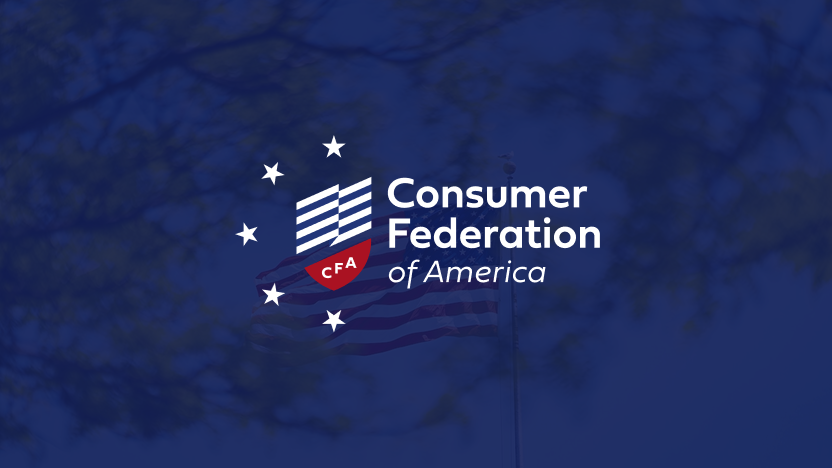Statement of Dr. Mark Cooper,
Director of Research
Joint NHTSA-EPA Hearings on Fuel Economy Standards for 2017-2025
January 2012
I am Dr. Mark Cooper, director of Research at the Consumer Federation of America. We greatly appreciate the opportunity to testify today because our analysis of the fuel economy and pollution emission standards proposed by the National Highway Traffic Safety Administration (NHTSA), the Environmental Protection Agency (EPA) and the California Air Resources Boards (CARB) leads us to conclude that they are a landmark in U.S. energy policy. These standards will deliver major economic, security and environmental benefits to consumers and the nation, while putting the U.S. auto industry on a path to global success. Our support for the standard is based on real world answers to two fundamental questions.Are the Standards In the Consumer Interest?
Consumer pocketbook savings: By far the single largest benefit of the standards is the reduction of consumer expenditures on gasoline and the decrease in the cost of driving. For the typical consumer, who purchases a new auto that complies with the 2025 standard with a five year auto loan, the consumer pocketbook savings will be immediate and substantial.
- Higher fuel economy standards lower the cost of driving from the first month because the reduction in gasoline expenditures is greater than the increase in the monthly payment to cover the cost of fuel saving technology.
- At the end of the auto loan, the consumer will have saved an average of about $800 by purchasing a new car that meets the standard.
- By the tenth year, the vehicle will have generated an average of over $3,000 in savings.
- Therefore, the resale value of the vehicle is also likely to be much higher.
- Gasoline prices set a record high in 2011 in both nominal and real terms, averaging $3.53 per gallon. This week’s prices are a record for January.
- Household gasoline expenditures set a record last year, reaching an average of over $2,850 per year.
- In 2011, gasoline expenditures were 40 percent higher than expenditures on home energy (electricity, natural gas, and heating oil); ten years ago, they were 13% lower.
- Rising gasoline prices have changed the structure of the cost of driving. Ten years ago, the cost of owning a vehicle was the largest single component of the cost of driving, about three times as high as the cost of gasoline. In 2011, the cost of gasoline will equal or exceed the cost of owning the vehicle for the first time.
- If there is one thing to take away from this hearing, it is that this is a consumer benefit program that addresses an important problem that has afflicted U.S. households for a decade.
- a reduction in oil consumption and imports by almost 4 billion barrels over the full life of all vehicles covered by the 2017-2025 standards which lowers the balance of payments deficit by $370 billion;
- driving down the price of oil by $0.25 per gallon, which produce a major boost to domestic economic growth (valued at $31.5 billion);
- lowering vulnerability to oil price shocks (valued at $21.5 billion); and
- reducing the need for national security expenditures ($21.5 billion).
- The total benefits are equal to almost 3.4 times the costs.
- In fact, the proposed standards are so clearly in the public interest that the benefits of the proposed rule far exceed the cost in every scenario considered by NHTSA and EPA, no matter how extreme the assumptions.
Our analysis also leads us to conclude that consumers will buy the new fuel efficient vehicles enabling auto makers to reach the targets set by the standard not simply because the standards produce large economic benefits, but also because they have been designed in a consumer-friendly manner that is sensitive to auto industry needs.
Public concerns about gasoline leads to support for higher fuel economy standards and changes in consumer behavior: Given the burden on household budgets and the continuing problem of oil vulnerability, it is not surprising to find that 75 percent or more of respondents to our public opinion polls:
- are concerned about gasoline prices and dependence on Mid-East oil;
- think it is important to reduce oil consumption; and
- support higher fuel economy standards.
- Almost two-thirds of the respondents support a 60 mile per gallon standard with a payback period of 3-5 years and think it will be good for automakers.
- 4-cylinder engines increased from 28% to 48%;
- car purchases increased from 48% to 59% of total yearly sales;
- small and mid-sized crossover SUVs more than doubled to over 21%; and,
- hybrids increased from less than 1% to more than 6%; while,
- small cars remained constant at 47%.
- The new attribute-based approach ensures that the standards do not require radical changes in the types or size of vehicles consumers drive; so the full range of choice will be available to consumers.
- They should accelerate the adoption of technologies that have begun to be utilized in small parts of the vehicle fleet at costs.
- The standards also provide incentives and flexibility in introducing new technologies -- particularly in electric vehicles.
- The setting of a steady path over a long time period gives consumers and the industry time to adapt to change.
- The coordination between the federal and state agencies that set standards for both fuel economy and pollution emissions creates certainty that the auto makers and auto buyers desperately need.
- The proposed standard brings U.S. standards up to international levels.
- With high disposable income and a reduction in the cost of driving, more autos will be sold and over 100,000 jobs created.
- the price of gasoline used in the current rule for 2025, is equal to the price of gasoline for 2011 – we think it will rise over time, and
- the cost of technology has consistently proven to be lower than the industry and the regulators estimated in previous major standards.
- virtually all auto makers who sell vehicles in the U.S.;
- the labor unions that represent the workers who manufacture light duty vehicles; and,
- consumers (as shown in survey research conducted by consumer organizations), who are the people who buy and drive the vehicles.

